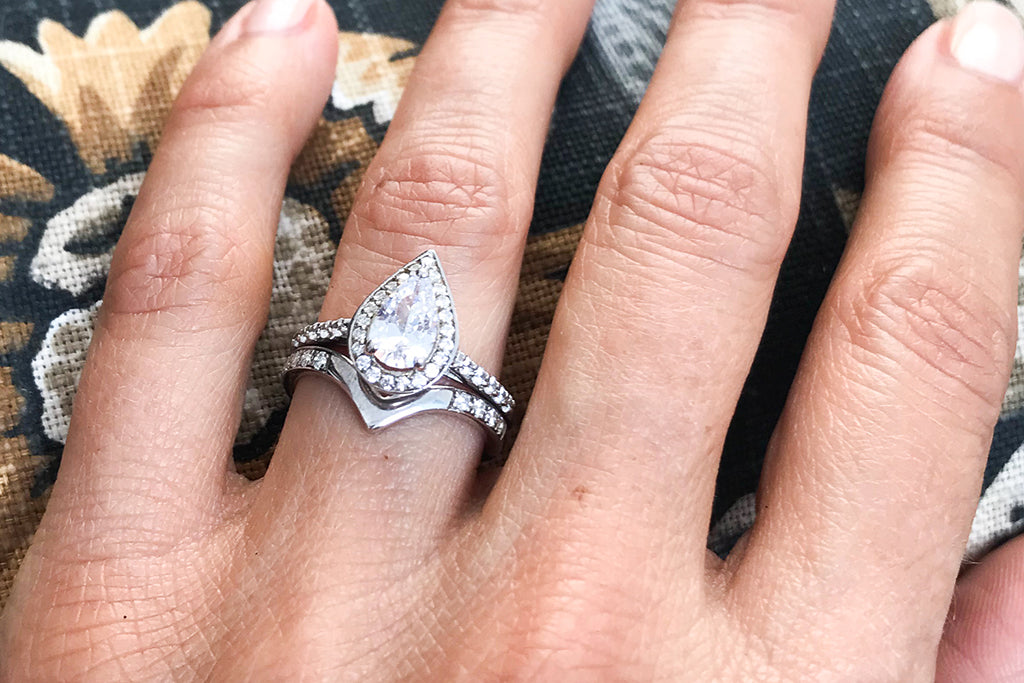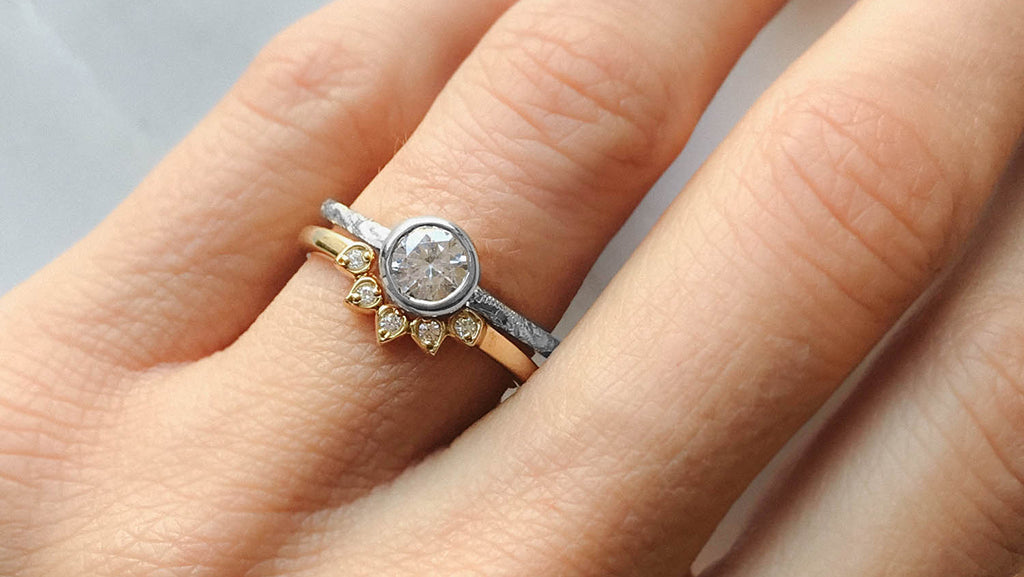Your Cart is Empty
When your partner ventured out on a mission to choose your beautiful engagement ring, it's likely their head was busy with conundrums; Diamond or coloured gemstone? Proud claw setting or streamlined bezel? What would suit your hand, befit your lifestyle, harmonise with the way you dress and gain the approval of your family and friends? Chances are, they chose with their heart and did a fantastic job. Now, picking your own wedding band is about building upon their vision, complementing the shape, style and metal type that already lays the foundations.

This is one of our most frequently asked questions. In the context of 'forever' jewellery like engagement rings and wedding bands, the short answer is no.
When picking out your wedding ring, there’s just one rule: Its metal must match your engagement ring in hardness. This is so neither ring scratches the other.
For example, platinum scores higher on the Mohs Scale of Hardness than gold. If you add a platinum wedding band to a gold engagement ring, it’s almost guaranteed that the gold will become scratched over time. This is particularly true of engraved bands – like our Athena Grande engagement ring – whose intricately-patterned surfaces are delicate and prone to wearing down quickly when exposed to abrasive substances.
For easy reference, gold scores a 2.5 on the Hardness Scale - whilst platinum scores a 3.5.
If you’d like your rings to look fresh-faced for as long as possible, the same metal, or at least two metals of the same hardness, is necessary.
 A platinum trilogy engagement ring and Scrolls Engraved wedding band
A platinum trilogy engagement ring and Scrolls Engraved wedding band
 Our 18ct white gold Hestia engagement ring with our yellow gold Teardrop Diamond Tiara wedding band
Our 18ct white gold Hestia engagement ring with our yellow gold Teardrop Diamond Tiara wedding band
Just because you can’t combine certain metals it doesn’t mean you can’t enjoy the stylish appearance of mixed metal colours!
Gold comes in a variety of shades, making it easy to mix and match. Taking this approach enables you to pick a bridal stack that’s unique to you AND conceived to last as long as possible. You could pair your yellow gold engagement ring with a wedding band in contemporary rose gold or classic white gold for an interesting spin on the traditional bridal stack.
In fact, this mix and match trend has skyrocketed in popularity in recent years. White gold and rose gold are close to one another on the Mohs Scale of Hardness and complement one another beautifully, silvery white reflecting dusky pink hues.
Combining gold colours is a great way to compromise if you and your fiancé have different tastes in metal but still wish to coordinate your wedding bands to a certain extent. Perhaps one loves the way yellow gold complements their darker skin, whilst the other prefers the cool, contemporary sheen of white metals?
